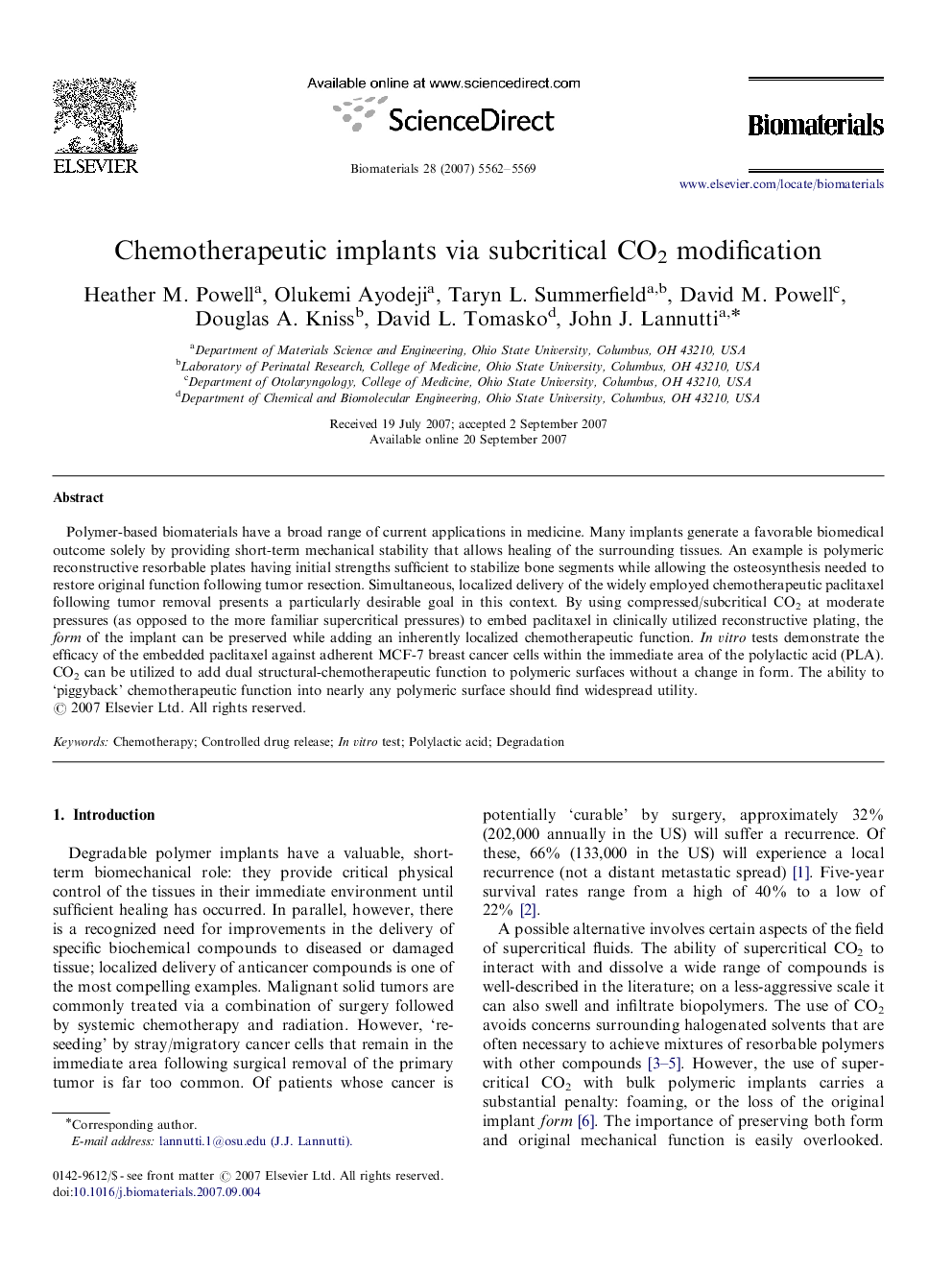| Article ID | Journal | Published Year | Pages | File Type |
|---|---|---|---|---|
| 10362 | Biomaterials | 2007 | 8 Pages |
Polymer-based biomaterials have a broad range of current applications in medicine. Many implants generate a favorable biomedical outcome solely by providing short-term mechanical stability that allows healing of the surrounding tissues. An example is polymeric reconstructive resorbable plates having initial strengths sufficient to stabilize bone segments while allowing the osteosynthesis needed to restore original function following tumor resection. Simultaneous, localized delivery of the widely employed chemotherapeutic paclitaxel following tumor removal presents a particularly desirable goal in this context. By using compressed/subcritical CO2 at moderate pressures (as opposed to the more familiar supercritical pressures) to embed paclitaxel in clinically utilized reconstructive plating, the form of the implant can be preserved while adding an inherently localized chemotherapeutic function. In vitro tests demonstrate the efficacy of the embedded paclitaxel against adherent MCF-7 breast cancer cells within the immediate area of the polylactic acid (PLA). CO2 can be utilized to add dual structural-chemotherapeutic function to polymeric surfaces without a change in form. The ability to ‘piggyback’ chemotherapeutic function into nearly any polymeric surface should find widespread utility.
